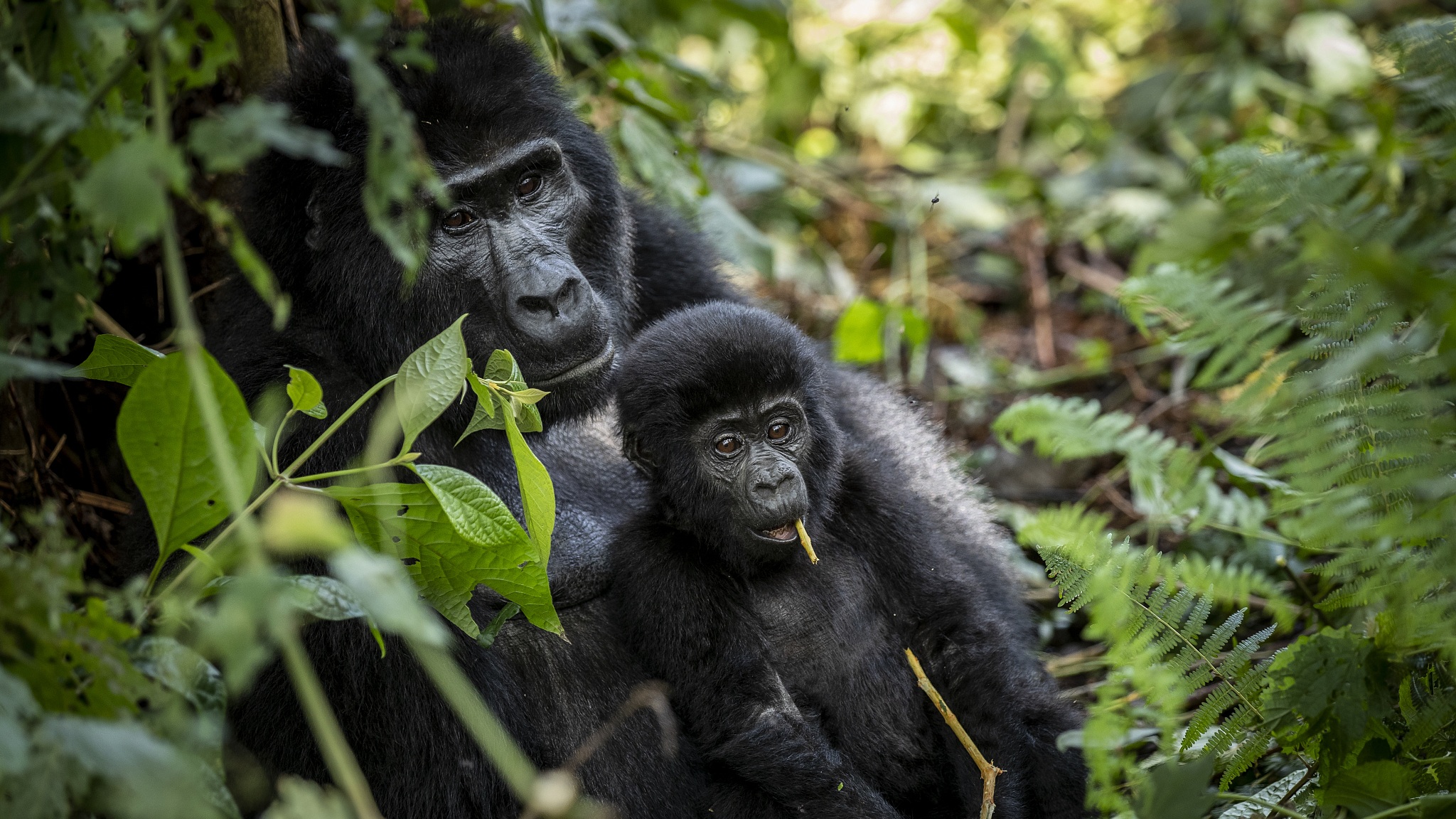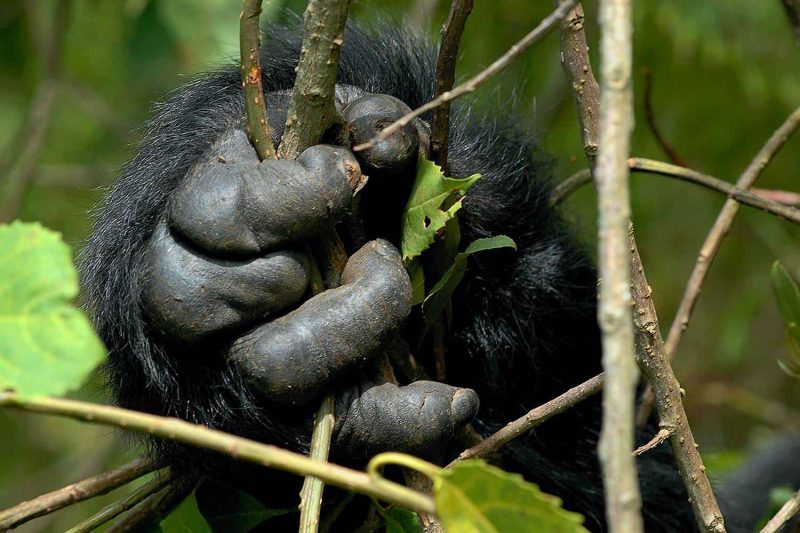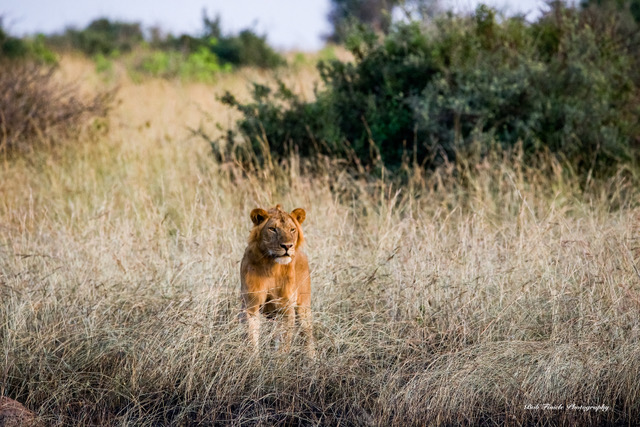Gorilla Trekking in Africa | Gorilla Trekking Safaris to Uganda, Rwanda, & Congo
Explore the virgin Bwindi impenetrable rainforest of this beautiful East African country. The highlight of this glamorous forest is when you meet face to face with your own family of mountain gorillas headed with the aid of a watchful but benevolent silverback male. The efforts of your gorilla trekking tour will evaporate on the spot.
And for the only captivating hour, you spend with the gorillas, an out-of-this-world sense of familiarity settles on you. Juvenile gorillas are tough and tumble like wrestlers, maternal girls acquire grooming in groups, occasionally reprimanding the little ones, whilst the patriarchal silverback continues a protecting eye on the surroundings.
Gorilla trekking offers one of Africa’s maximum profound wildlife excursions – their populations. Even in blanketed reserves, are counted in masses in place of lots. So rare are gorillas, that trackers can provide them man or woman names and become aware of their faces and personalities effortlessly.
Best Gorilla Trekking and Wildlife Safaris Tour Excursions to East Africa
Brief About Gorilla Trekking in Africa
Africa’s first-rate apes survive in what remains of their natural habitat, inside the last covered stretches of the continent’s important rain-forests and gorilla parks. Due to the profits earned from Gorilla Trekking permits, populations are slowly on the growth, and the scouts, who once could have been poachers of gorillas and other different primates, are now their protectors and earn their livelihoods safeguarding what they would have destroyed. It’s a conservation achievement tale, and this persevered gorilla trekking tourism activity has been critical to the species’ endured life.
Spending time with gorillas in the wild is in ways the most transformative and up-close natural world revel in Africa. A face-to-face encounter with those wonderful apes within the gorilla parks of Uganda, Rwanda, and Congo will present you with soul-stirring recollections to by no means fade. in case you’re thinking about a gorilla trekking adventure and would like to understand what to expect, right here is our reachable guide on all you want to recognize:
Where to Go for Gorilla Trekking in Africa – Africa Discovery Tours
Frequently Asked Questions About Gorilla Trekking in Africa
Why Go Gorilla Trekking in Africa?
Africa’s mountain gorillas can live to tell the tale best in the wild – you can’t see these creatures in a zoo – which makes trekking to see them in their natural habitat a once-in-a-lifetime adventure. the 2 excellent locations to peer mountain gorillas are Uganda’s Bwindi Impenetrable wooded area National Park and Rwanda’s Volcanoes National Park. severely endangered due to deforestation and looking, their population has diminished to a predicted 900 individuals, clinging on to survival in those far-flung sanctuaries.
Bushmeat hunting and wood harvesting in Congo have negatively affected the possibility of the western lowland gorilla’s survival. Lowland gorillas – the smaller and much less shaggy cousins of mountain gorillas – stay in lowland swampland, number one and secondary forests, and are severely endangered. Through primate studies and Gorilla Trekking tourism, the ones residing around Congo’s Odzala-Kokoua National Park have started to recognize a better value in conservation.
This is thanks to job advent and investments in the area, so groups are running with research and tourism task force in the direction of a more potent future for the Congo Basin and all its inhabitants. Odzala-Kokoua National Park is a sanctuary for approximately a hundred mammal species and one of Africa’s most numerous primate populations.
Sitting a few meters away from a family of gorillas, seeing your humanity reflected in their social rituals and warm brown eyes, makes for one of the most cathartic and intimate flora and fauna encounters you could have in Africa, if not the arena.
Best Time to do Gorilla Trekking
Uganda and Rwanda the 2 most considered destinations for Gorilla trekking have similar climates and even though Gorilla Trekking is taken to be a year-spherical activity, the exceptional time to visit the rain-forests is during the dry seasons. The first season runs from approximately the middle of December to the cease of February and the second one from early June to the start of September. These intervals are the preferred times for hiking, however, situations are still very humid and wet with masses of dust (so do not forget your gaiters!).
Rain is an essential part of the valuable atmosphere within the Congo Basin’s equatorial rain-forest and its seasons can be aptly defined as wet, wetter, and wettest. Gorilla Trekking in Congo is simpler at some point during the ‘low rainfall’ season, which runs from June to September, and the ‘gentle rainfall’ season from December to February. July to August is considered the least wet and coolest time of the year.
What To Expect In Your Gorilla Trekking experience
Hiking gorillas in mountainous rain-forests usually involves hours of trekking on steep, slim footpaths and walking via the dense jungle behind a scout who slashes a path through the foliage with a machete. You need to be at the least in shape and properly prepared for hard surroundings. We propose ankle-high hiking boots that defend your ankles, double-layered socks (cotton inners and thick outer), and knee-high gaiters. Please be conscious that gorillas are incredibly at risk of human ailments; you will no longer be allowed to go on a gorilla trek when you have a cold or any other contagious contamination.
Geared up to Begin Planning Your Gorilla Trekking Adventure?
Mountain gorillas are critically dangerous and endangered, so gorilla trekking is carefully regulated in Africa’s gorilla parks. Permits are both high-priced, difficult to secure, and cannot be held provisionally. Traveling to such remote destinations and making sure the satisfactory possibilities for gorilla trekking call for prior preparation and neighborhood knowledge that you get from an Africa Safari expert. Get in contact with someone who’s been there:
Tourist FAQs About Gorilla Trekking in Africa
1. Will I See Mountain Gorillas?
Because they’re so carefully monitored daily by either researchers or trekkers, you probably have a 99% chance of seeing them. On the other hand, there are not any guarantees with the wild because an overnight thunderstorm or an unexpected come across with a predator may also cause a troop to transport suddenly in a total one-of-a-kind direction, however, scouts will probably pick up their trail once more quickly. It’s very seldom that travelers don’t discover the apes all through a gorilla trekking day trip.
Whilst you do find a gorilla family, your ranger will ask you to remove any shining object like any jewelry but your camera. He will then take you to close up approximately 7 meters a distance sufficient to observe the gorillas intimately without threatening them. There aren’t any fences between you; best mutual admire. The gorillas are habituated to human observers and go about their herbal commercial enterprise – foraging, grooming, and sound asleep – without fear.
Certainly, the kids are frequently curious about the presence of humans and they feature a very playful attitude that stretches the persistence of their teenage gorilla babysitters. The placid nature of the gorilla circle of relatives is splendid to peer, however, keep in mind that your presence is shrewdly observed by the patriarch of the circle of relatives: the huge silverback male. We endorse that you spend part of the time taking pix, however at the least 20 mins just staring at – you will come away with a much extra feel of getting skilled a group of gorillas of their herbal habitat.
2. Am I Able to Contact Them?
No, and a BIG NO. Although we completely recognize the instinct need to reach out and cuddle a cute toddler. First, because they’re wild animals and therefore very sturdy and unpredictable, you can be critically injured. Secondly, gorilla populations are already below severe danger from logging, poaching, and human encroachment on their surroundings, plus they’re noticeably liable to human diseases.
You are not only discouraged from interacting with them, but you’re also required to maintain a distance of at least seven meters (22 ft) at all times and, in a few instances, wear face masks. if you are ill, you may not be allowed to head on a gorilla trek, so make sure you’re in superb health before your journey and take precautions no longer to select up a worm on the flight over.
Take into account, that after you find the gorillas, you’re allowed an hour with them in order not to cause them distress. This passes by in a flash, so don’t spend all your time in the back of a lens: put the digicam down after a few minutes and just watch them, grateful that you have the uncommon privilege of seeing those amazing beasts in the wild.
3. Should I Use a Porter?
We strongly encourage you to apply for a porter in case you may require their services at some stage in your gorilla trek, even in case you feel you’re suited enough to deal with the terrain, altitude, humidity, and your daypack. For a nominal amount of money – around USD20 – you’ll be offering a livelihood to numerous populations of a nearby village.
Porters are in most instances transformed poachers, so without work and the capability to earn a dwelling within gorilla conservation, many might be pressured to return to locating and capturing or killing gorillas for bushmeat or the unlawful wildlife-trafficking alternate. The incentives offered by poaching syndicates can be very profitable for impoverished villagers with few other methods of income a dwelling. It’s better to graciously accept their help and pay the rate – which will amount to multiple coffees back home – your assistance will ensure the continuing conservation of gorillas.
Bear in mind, that every legally employed character in Africa supports seven to nine other human beings. There may be no successful conservation without regarding human beings as a great deal as viable – so the more porters you may get on board, the higher!
4. How Healthy Should I Be?
Like any strenuous activity, the more fit you’re, the better. However, this doesn’t mean that you need to have the ability to complete a triathlon or bench press 3 times your body weight to go gorilla trekking.
Trekkers could be divided into organizations of comparable age and fitness tiers, and the oldest and least suited humans will normally be allocated the gorilla family that is nearest the start line. Don’t fear: you won’t be split up from family contributors or friends but – obeying the golden rule of hiking – the fastest walkers will need to sluggish down to the pace of the slowest so that the institution remains collectively competently.
The fittest or youngest people can be chosen to find the group furthest away. Your guides are very experienced in assessing how the group is coping and could stop for some members to catch a break, drink water, appreciate a view, or even have a snack. Packed lunches include water and perhaps some roasted cashews or peanuts, bananas, apples, chocolate bars, cakes, small sandwiches or bread rolls, and treats like ‘rolled eggs’ – a type of omelet eaten with ease.
It’s constantly simplest to trek during the dry season because in the wet season, the mud could make trails slippery and the trek more difficult. Primates may additionally be looking for refuge from the rain in nests or timber, making them more difficult to locate and notice. Take lightweight binoculars alongside to catch their antics and expressions from a distance.
Also, not all gorilla households might be lolling around, munching leaves, and basking in the sunshine – some might be on the move, and since they adapted to this rainforest being their home, they transfer swiftly through it compared to us, so you’ll need to catch up!























